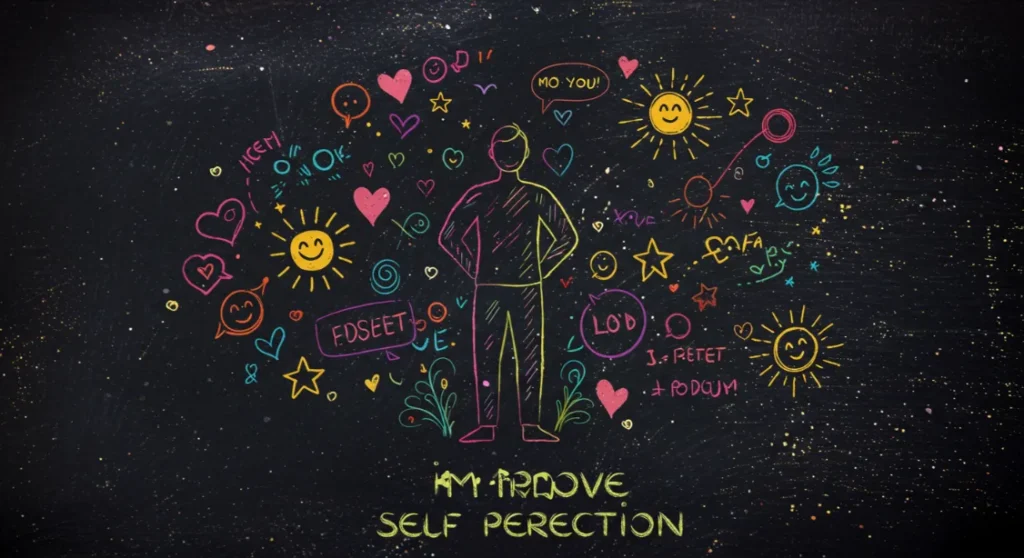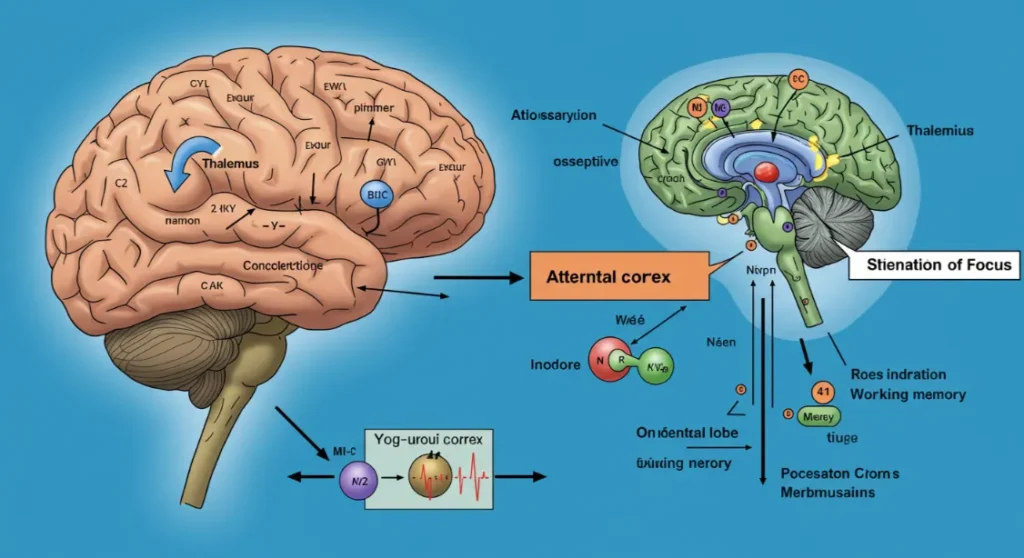Have you ever wondered how Olympic athletes achieve seemingly impossible feats? Or how successful entrepreneurs turn their wildest dreams into reality? The secret might be simpler than you think. Imagine this: by spending just 10 minutes a day visualizing your goals, you could increase your chances of achieving them by a whopping 42%!
That’s right, a study by Dr. Gail Matthews found that people who regularly visualized their goals were nearly twice as likely to accomplish them compared to those who didn’t. Mind-blowing, isn’t it?
Key Takeaways:
- Visualization activates the same brain regions as actually performing a task.
- Regular visualization can increase goal achievement by up to 42%.
- Combining visualization with physical practice leads to the best results.
- Creating a vision board enhances the power of visualization.
- Visualization can reduce stress and boost confidence.
- Consistency is key; aim for daily visualization sessions.
Now, let’s dive into the fascinating world of visualization and discover how you can harness its power to achieve your wildest dreams!
What is visualization?
Visualization is like daydreaming with a purpose. It’s the practice of creating vivid mental images of your goals and desired outcomes. But it’s not just about picturing success—it’s about feeling it, hearing it, and even smelling it!
When you visualize, you’re basically giving your brain a sneak peek of your future success. Think of it like this: have you ever watched a movie trailer that got you super excited to see the full film? Visualization is like creating a trailer for your goals. It gets you pumped up and ready to take action!
The Science Behind Visualization

You might be thinking, “This sounds a bit woo-woo. Does it really work?” Well, science says yes! Research has shown that visualization can be a powerful tool for achieving your goals. Here’s why:
- Brain Training: When you visualize, your brain doesn’t know the difference between imagination and reality. It activates the same neural pathways as if you were actually doing the task. It’s like a mental rehearsal!
- Motivation Boost: Visualization helps you stay focused on your goals. It’s like having a constant reminder of what you’re working towards.
- Stress Reduction: Regular visualization can help reduce anxiety and stress about future events. It’s like giving yourself a pep talk every day!
- Increased Confidence: The more you visualize success, the more you believe it’s possible. It’s like building your self-belief muscles!
Visualization Techniques for Goal Achievement
Ready to give visualization a try? Here are some techniques to get you started:
1. Create a vision board.

A vision board is like a physical representation of your goals. It’s a collage of images, quotes, and symbols that represent your dreams and aspirations.
Creating a vision board can be a fun and creative way to visualize your goals.
2. Guided Imagery

This technique involves listening to a recorded script or following a guide who helps you visualize a specific scenario. It’s like having a personal trainer for your imagination!
3. Mental Rehearsal

Athletics often use this technique to prepare for competitions. It involves visualizing yourself performing a specific task or achieving a goal in great detail.
It’s a great way to practice conscious practice and improve your skills.
4. Future self-visualization

Imagine yourself in the future, having achieved your goals. What does your life look like? How do you feel? This technique can help you clarify your long-term aspirations.
The Visualization Process: A Step-by-Step Guide

Ready to start visualizing? Here’s a simple process to follow:
- Find a quiet space. Choose a calm, comfortable environment where you won’t be disturbed.
- Relax your body: Take a few deep breaths and let go of any tension.
- Set your intention: Clearly define what you want to visualize.
- Create a vivid mental image. Use all your senses to make the visualization as real as possible.
- Feel the emotions: Imagine how you’ll feel when you achieve your goal.
- End positively: Conclude your visualization with a sense of confidence and excitement.
- Take action: Use the motivation from your visualization to take steps towards your goal.
Visualization in Action: Real-Life Success Stories
Visualization isn’t just for athletes or entrepreneurs. It’s a tool that anyone can use to achieve their goals. Here are some inspiring examples:
| Name | Field | How They Used Visualization | Result |
|---|---|---|---|
| Michael Phelps | Swimming | Visualized every detail of his races | 28 Olympic medals |
| Jim Carrey | Acting | Wrote himself a $10 million check for acting services | Earned $10 million for a movie role |
| Oprah Winfrey | Media | Visualized her success daily | Built a media empire |
These stories show that visualization, combined with hard work and determination, can lead to incredible achievements.
It’s all about finding your passion and staying focused on your goals.
Common Visualization Mistakes to Avoid

While visualization is a powerful tool, it’s important to use it correctly. Here are some common pitfalls to watch out for:
- Visualizing only the end result: Don’t just focus on the goal. Visualize the process and steps needed to get there too.
- Not making it vivid enough: The more detailed your visualization, the more effective it will be.
- Inconsistency: Visualization works best when done regularly. Try to make it part of your daily routine.
- Neglecting action: Visualization is not a substitute for hard work. It’s a tool to support your efforts.
- Focusing on negative outcomes: Always visualize positive scenarios to build confidence and motivation.
Enhancing Your Visualization Practice
To get the most out of your visualization practice, try these tips:
- Use affirmations: Combine your visualization with positive affirmations to reinforce your beliefs.
- Write it down: Journaling about your visualizations can help make them more concrete.
- Stay present: Practice mindfulness to improve your ability to focus during visualization.
- Be consistent: Set aside time each day for visualization, even if it’s just for a few minutes.
- Update your visualizations: As your goals evolve, make sure your visualizations reflect these changes.
The role of visualization in overcoming obstacles

Visualization isn’t just about picturing success. It can also help you overcome obstacles and challenges. Here’s how:
- Problem-solving: visualize different solutions to a problem to come up with creative ideas.
- Confidence building: Imagine yourself successfully overcoming challenges to boost your self-belief.
- Stress reduction: Visualize calm, peaceful scenarios to reduce anxiety about future events.
- Resilience: Use visualization to mentally prepare for potential setbacks and how you’ll bounce back.
Combining visualization with other goal-setting techniques
While visualization is powerful on its own, it works even better when combined with other goal-setting strategies. Here are some effective combinations:
| Technique | How It Works with Visualization | Benefits |
|---|---|---|
| SMART Goals | Visualize achieving specific, measurable goals | Increases clarity and motivation |
| Habit Stacking | Visualize incorporating new habits into your routine | Enhances habit formation |
| Accountability Partners | Visualize succeeding with support from others | Boosts commitment and support |
Remember, the science of goal setting shows that using multiple strategies increases your chances of success.
Measuring the Success of Your Visualization Practice
How do you know if your visualization practice is working? Here are some signs to look out for:
- Increased motivation: You feel more excited and driven to work towards your goals.
- Improved performance: You notice improvements in your skills or abilities.
- Reduced stress: You feel calmer and more confident about future events.
- Greater clarity: Your goals become clearer and more defined.
- Positive mindset: You have a more optimistic outlook on your ability to achieve your goals.
Conclusion: Your Journey to Success Starts in Your Mind
Visualization is a powerful tool that can help you achieve your goals and unlock your full potential. By regularly practicing visualization techniques, you can train your brain for success, boost your motivation, and overcome obstacles with confidence.
Remember, the journey to success starts in your mind—so start visualizing your way to greatness today! Don’t let fear of missing out hold you back. Embrace the power of visualization and watch as your dreams become reality. After all, if you can see it in your mind, you can hold it in your hand!
Resources
- “The Power of Visualization” by Dr. Tara Swart—Link
- Visualization for Athletes Course: Link
- “Creative Visualization” by Shakti Gawain – Link
- Guided Visualization App: Insight Timer – Link
- TED Talk: “The Power of Belief” by Eduardo Briceno – Link
- Vision Board Creation Workshop: Link
Related Resources
- For related insights, our discussion on Unstoppable Motivation: Hack Your Brain & Achieve Any Goal expands on these concepts Unstoppable Motivation: Hack Your Brain & Achieve Any Goal.
- This connects to our discussion on 7 Success Habits to Build a High-Performance Life (2024 Guide) 7 Success Habits to Build a High-Performance Life (2024 Guide).
- For related insights, our discussion on Crush Excuses: Unlock Your Potential & Achieve Any Goal! expands on these concepts Crush Excuses: Unlock Your Potential & Achieve Any Goal!.